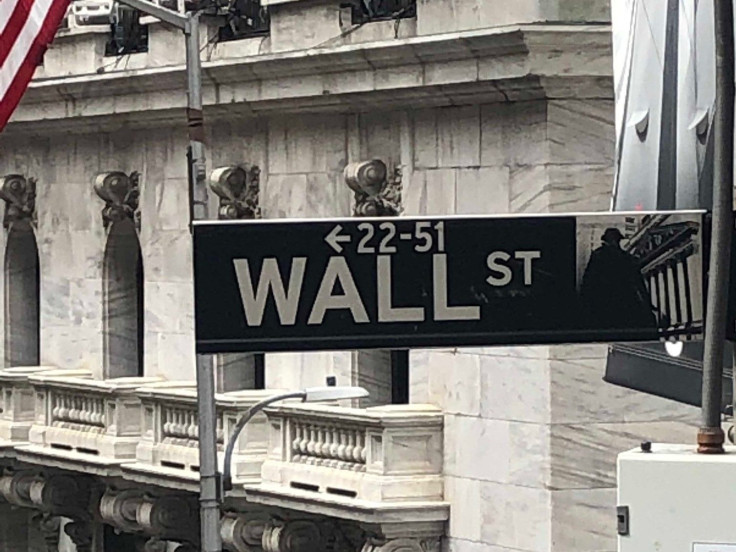Wednesday's Stock Market Close: US Equities Rise On Potential Virus Treatment, Fed Pledge To Keep Rates Near Zero

KEY POINTS
- The Fed said it will maintain its current interest rate target between 0% and 0.25%
- Fed Chairman Jerome Powell said the central bank will probably have to do more to prop up the economy
- A study by conducted by the National Institute of Allergy and Infectious Diseases of Gilead’s remdesivir drug met its primary endpoint
U.S. stocks rose on Wednesday on some positive data from Gilead Sciences (GILD) on a potential treatment for coronavirus, and a pledge from the Federal Reserve to keep interest rates near zero as long as it is necessary.
The Dow Jones Industrial Average surged 532.31 points to 24,633.86, while the S&P 500 gained 76.12 points to 2,939.51 and the Nasdaq Composite Index rose 306.98 points to 8,914.71.
Volume on the New York Stock Exchange totaled 5.67 billion shares with 2,646 issues advancing, 24 setting new highs, and 345 declining, with four setting new lows.
Active movers were led by General Electric (GE), Capricor Therapeutics Inc. (CAPR) and Ford Motor Co. (F).
A study by conducted by the National Institute of Allergy and Infectious Diseases of Gilead’s remdesivir drug met its primary endpoint, raising hopes it could become potential coronavirus treatment. Gilead’s own study showed improvement in patients who took remdesivir to treat the illness.
Dr. Anthony Fauci, director of the National Institute of Allergy and Infectious Diseases, said remdesivir shows a “clear-cut” positive effect on treating the virus
“Markets are going to move like this on this kind of news,” said Megan Horneman, director of portfolio strategy at Verdence Capital Advisors. “If we had a vaccination, then I think you would see a very different economic recovery. If we have treatments, I think you’ll see a little bit quicker of an economic recovery. We’ll take these days, but we’re not investing or changing any of our asset allocation because one day.”
The Federal Reserve’s Federal Open Market Committee said it will maintain its current interest rate target between 0% and 0.25%.
“The ongoing public health crisis will weigh heavily on economic activity, employment, and inflation in the near term, and poses considerable risks to the economic outlook over the medium term,” the committee said. “The Committee expects to maintain this target range until it is confident that the economy has weathered recent events and is on track to achieve its maximum employment and price stability goals."
The FOMC further stated: "The virus and the measures taken to protect public health are inducing sharp declines in economic activity and a surge in job losses. Weaker demand and significantly lower oil prices are holding down consumer price inflation. The disruptions to economic activity here and abroad have significantly affected financial conditions and have impaired the flow of credit to U.S. households and businesses."
Fed Chairman Jerome Powell said the central bank will probably have to do more to prop up the economy, adding the Fed “will do it to the absolute limit of those powers.”
“We're going to not be in any hurry to withdraw these measures or to lift off.” Powell noted. “We're going to wait until we're quite confident that the economy is well on the road to recovery.”
U.S. gross domestic product shrank by 4.8% in the first quarter, even worse than consensus expectations of a 3.5% decline.
Diane Swonk, chief economist at Grant Thornton, tweeted: “The contraction in consumer nondurable goods and services was even greater than the losses in big ticket spending. Housing held up better as contracts in the pipeline were closed. There was a sharp drop in mortgage applications for purchase in March and credit [conditions] tightened.”
Some observers expect the second quarter of 2020 to be far worse.
"You're looking at something like minus-20% to minus-30% in the second quarter," said White House economic adviser Kevin Hassett on Monday. "[The pandemic is] the biggest shock since the Great Depression. It’s a very grave shock and it’s something we need to take seriously.”
The Congressional Budget Office predicted that second quarter GDP could fall by as much as 40%, the worst such performance since 1947.
“The market is signaling that by May 15 through June 1 the majority of the economy will reopen,” said Yousef Abbasi, director of U.S. institutional equities at INTL FCStone.
Overnight in Asia, markets rose moderately. China’s Shanghai Composite rose 0.44%, Hong Kong’s Hang Seng edged up 0.28% and Japan’s Nikkei-225 was closed for holiday.
In Europe markets closed higher, as Britain’s FTSE-100 gained 2.63%, France’s CAC-40 climbed 2.22% and Germany’s DAX rose 2.89%.
Crude oil futures jumped 24.8% at $15.40 per barrel, Brent crude was flat at $24.23. Gold futures gained 0.38%.
The euro rose 0.51% at $1.0876 while the pound sterling edged up 0.27% at $1.246.
The yield on the 10-year Treasury gained 2.79% to 0.627% while yield on the 30-year Treasury rose 3.23% to 1.245%.
© Copyright IBTimes 2025. All rights reserved.





















